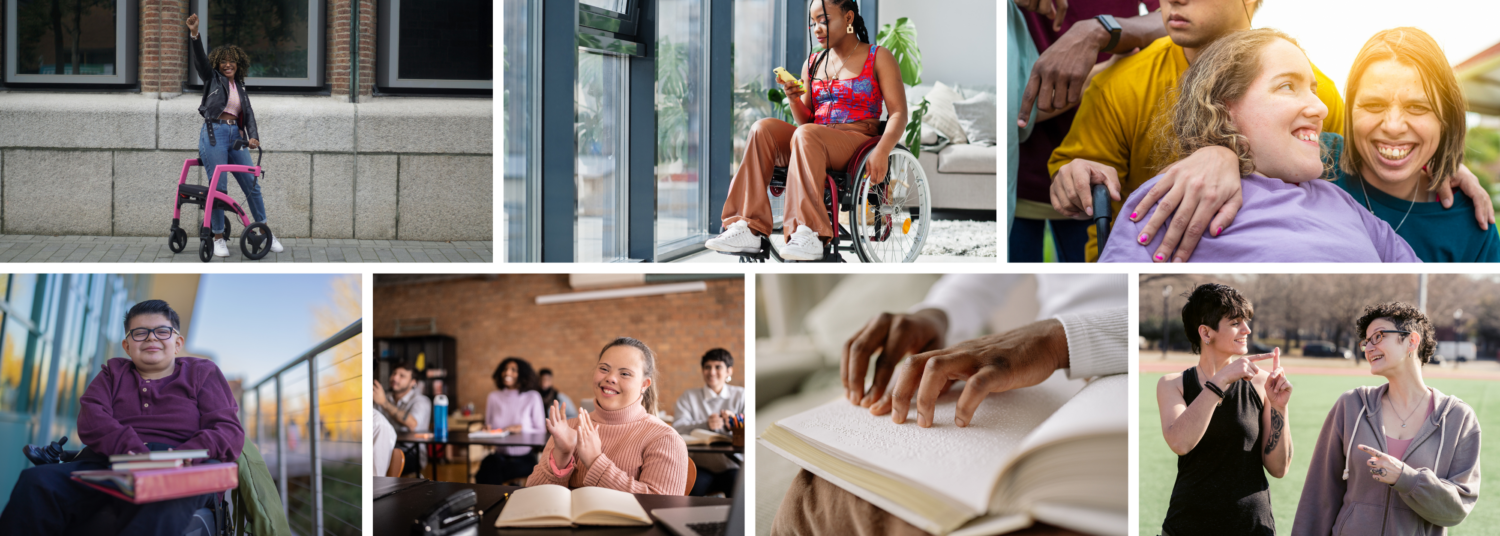“Good enough is not good enough if it can be better. And better is not good enough if it can be best.” ― Rick Rigsby
Accommodation decisions and practices are framed by the notions of “functional equivalency” and “reasonable accommodations” cemented by the enactment of the Americans with Disabilities Act (ADA) 31 years ago. Because of this, some postsecondary institutions may interpret their legal obligations under the ADA as the need to provide only the bare minimum.
This minimum, while perhaps legally sufficient, does not ensure deaf students have full access to the same experience as their peers, both in and out of the classroom, nor does it guarantee positive outcomes. To foster inclusive settings for all students to thrive that go beyond just being “good enough,” access must be viewed as a multifaceted framework that is part of the policies and practices at every level of the institution.
Promote Student Development In and Out of the Classroom
When asked about the most difficult thing about being a deaf student in college, one student replied, “Being alone; wishing for more social interactions.”
Providing appropriate accommodations — while important — may not prevent deaf students from feeling isolated or excluded from the community. Accommodations alone are not enough. We need to look beyond accommodations to consider a student-centered approach to advancing true educational access and ensuring that every deaf student has the chance to thrive.
Student-centered approaches allow every student to feel safe, engaged, healthy, challenged, and supported. Disability support staff, in-class service providers, and faculty all play a critical role in promoting not only learning, but overall well-being.
To help accomplish this, the National Alliance of Concurrent Enrollment Partnerships (NACEP) and the National Conference of State Legislatures (NCSL) advocate for designing learning environments, as well as changing policy and systems, to support student-centered learning. This includes not only academic achievement but also mental well-being and identity development. It shows that opportunities for social engagement, in both formal and informal settings, are equally important as academic engagement.
Build Flexible Options for Deaf Students
“Even if I planned ahead, I still don’t get interpreters because a lot of functions are only a week’s notice. It’s very isolating,” one deaf student explained. “I become drained and exhausted trying and attempting to read lips. I usually just smile and nod or don’t go.”
These last-minute events can be a vital part of student growth, helping them make real connections with others. While many institutions have policies outlining interpreter request procedures, few have built robust systems that are able to support requests on short notice. Being unable to fully take part in the full collegiate experience can be stifling, both socially and academically.
In order to support the many incidental and impromptu learning opportunities available on campus, disability services offices can seek to build better relationships with entities on and off campus. For example, collaborate with other departments on campus to proactively provide accommodations at campus events and activities, or advertise appropriately for accommodation requests. Or disability services offices can connect with interpreting agencies to hire on-call interpreters for historically busy times.
Creating accessible opportunities for students — beyond just the classroom — will create pathways for deaf students to gain valuable experiences that are equal to that of their peers.
Examine Inclusive Practices
Each student will navigate university settings differently. Moving beyond access includes taking into account all the factors that shape experiences for deaf people: identity, culture, language, family, educational background, and societal perceptions.
Institutions must recognize that people and systems in postsecondary settings can further marginalize deaf people, particularly deaf students of color. Honoring students’ multiple identities and experiences using a student-centered approach creates opportunities to re-evaluate and refine the systems that support students and those that may hold them back.
As Kimball and others explain in their research on the intersections of disability and other identities, “we must begin to view students with disabilities through a holistic lens and offer support services, courses, workshops, and everyday conversations that honor their range of experiences with intersectionality.”
Strategies for Creating Access
- Seek opportunities to include deaf role models on campus; consider partnering with campus clubs and organizations to bring deaf presenters to campus.
- Make communication technology available at offices, information desks, campus security, and in residence halls where students are likely to have frequent brief interactions with staff members.
- Offer, introduce, and train students to use a range of accommodations to maximize experiences and learning across campus.
- Encourage networking opportunities, like internships, teaching assistant positions, job shadowing, or mentoring, that will strengthen relationships among faculty members, students, and the larger college community.
NDC is Here to Help
As always, NDC is here to support you as you seek to expand access and opportunity for deaf students. For more strategies to create #DeafSuccess on your campus, read the ACCESS Is More Than Accommodations report. You can also learn more with these valuable resources:
- Deaf student experiences with access in higher education:
/podreport
- Attitudes as Barriers for Deaf People: /learn
You can also reach out to NDC for help from our expert help team: /get-help.








